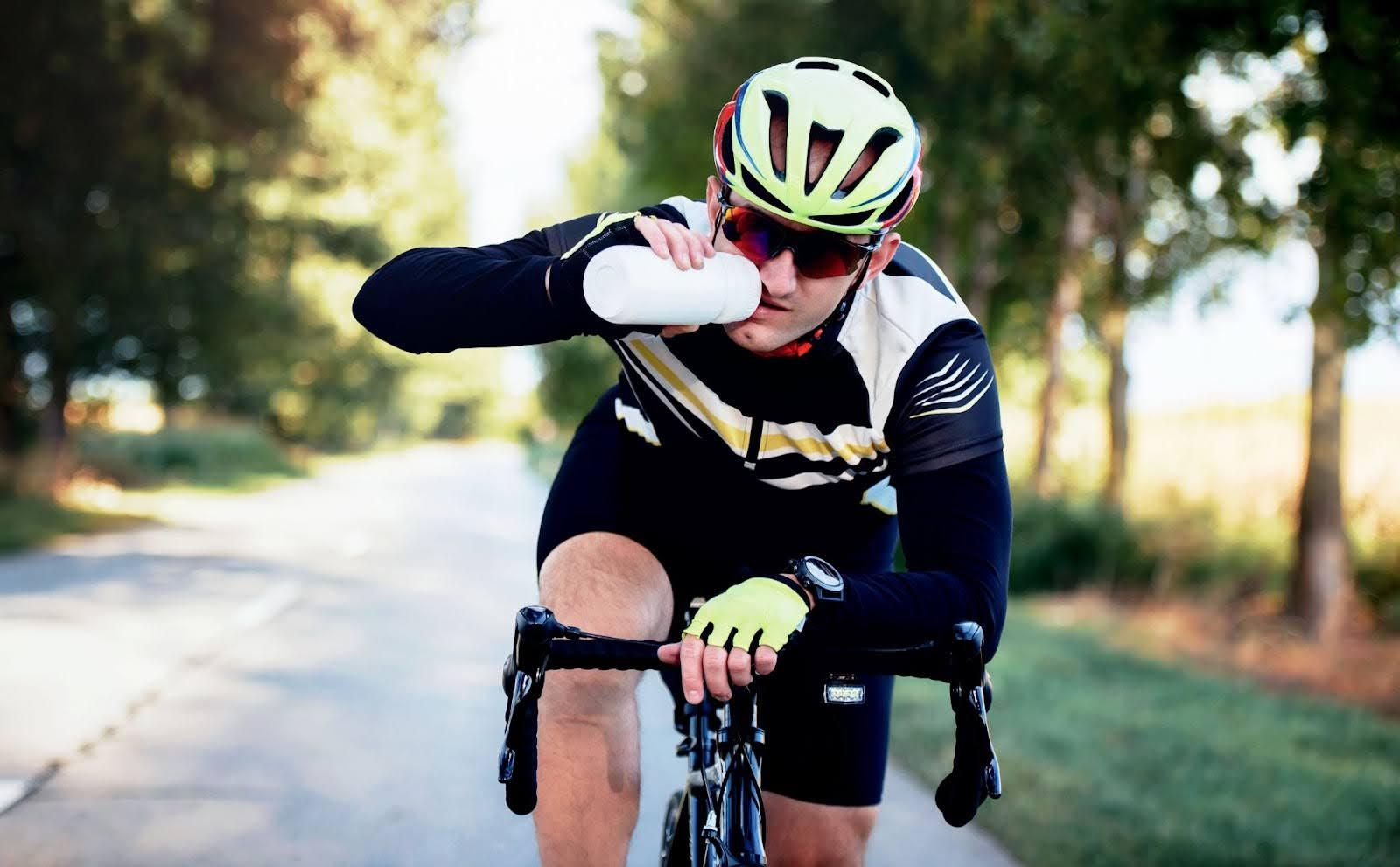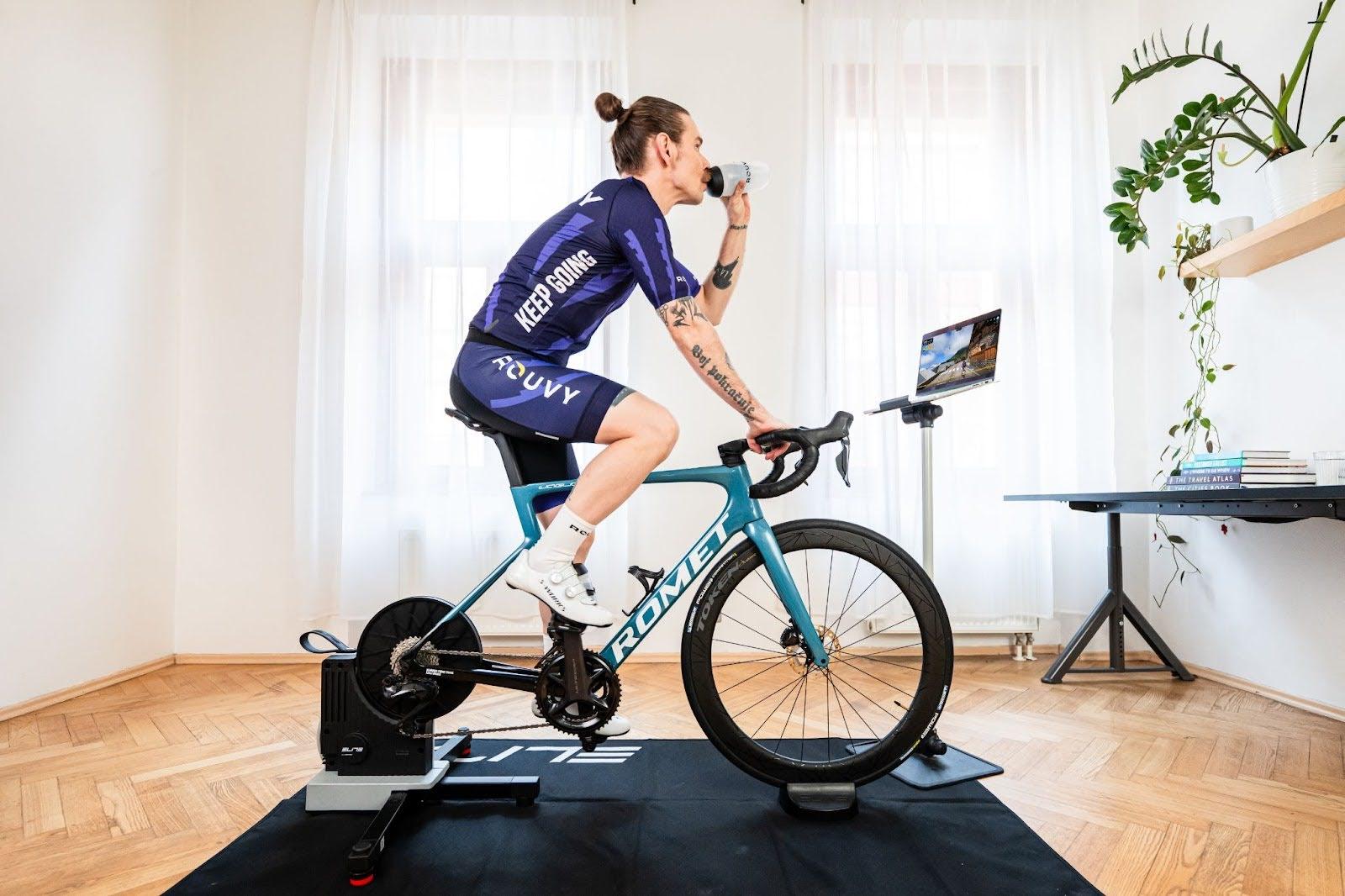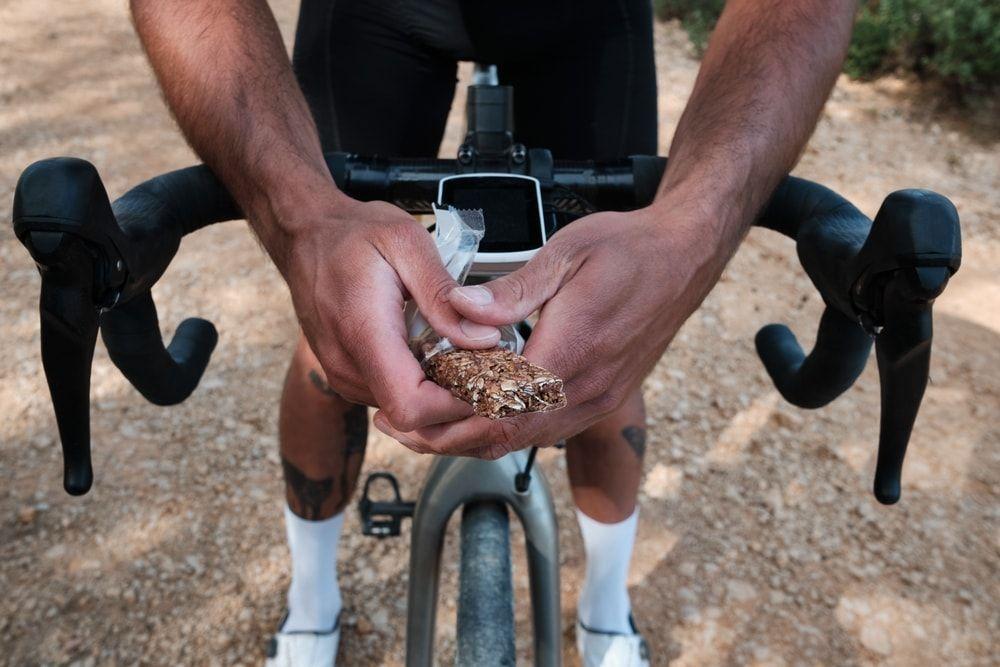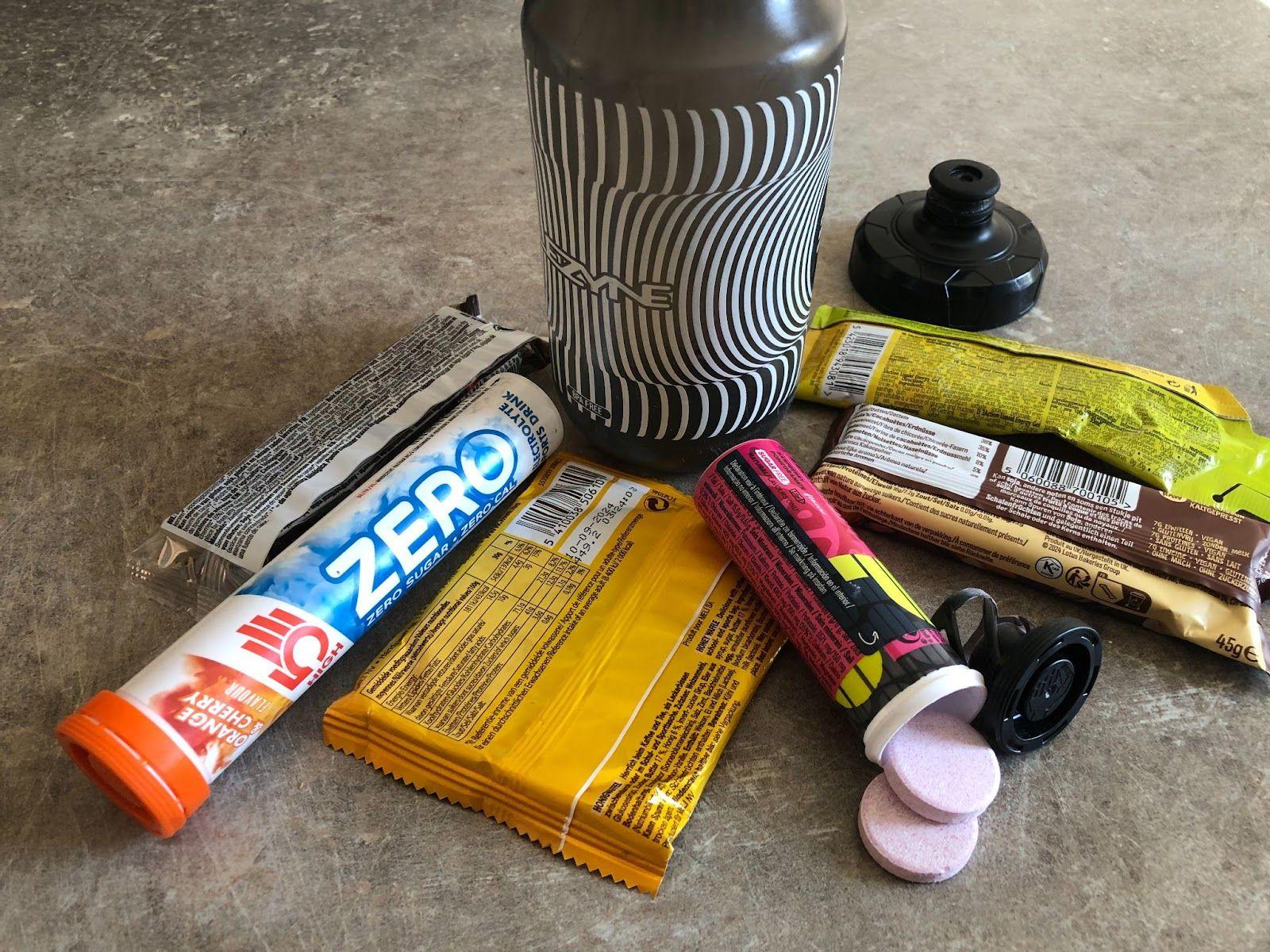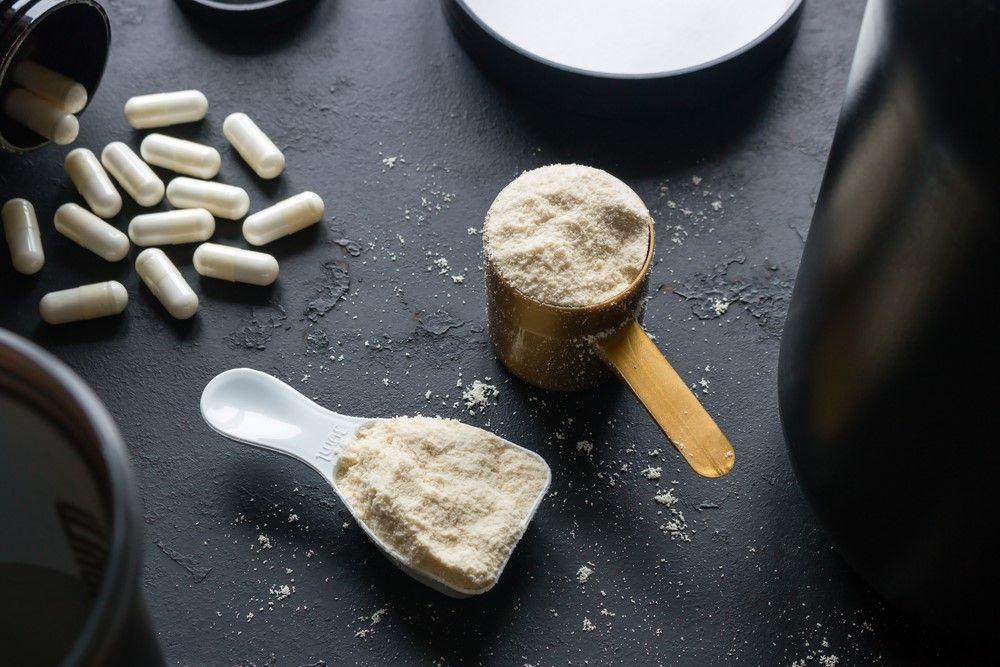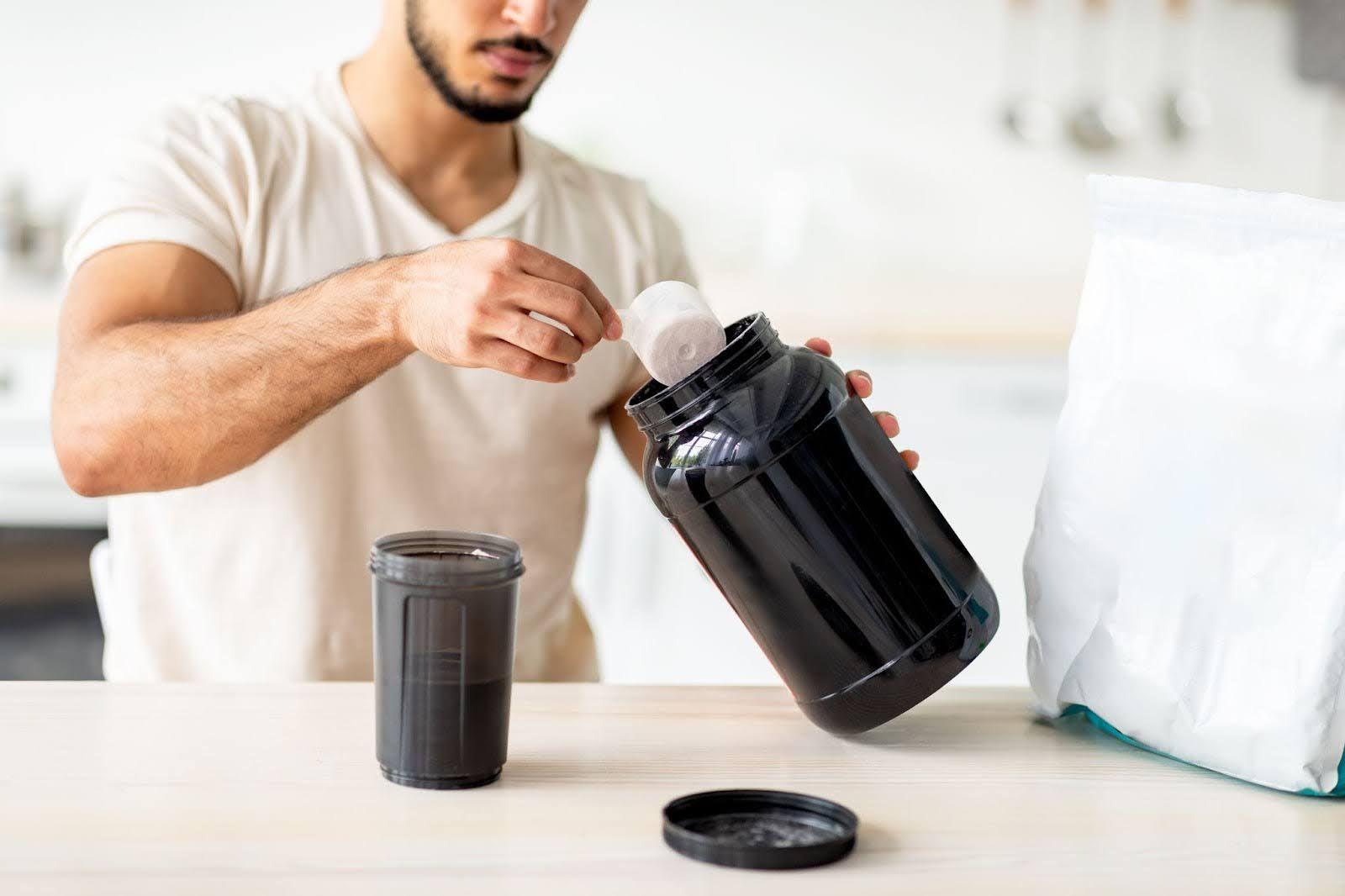How to calculate your sweat rate
Here’s a step-by-step guide to doing an accurate sweat-rate assessment:
- Weigh yourself without clothes before exercising. This is your pre-exercise weight.
- Exercise at normal intensity for 60 minutes. We suggest doing one of the Workouts on ROUVY.
- Track fluid intake during the exercise.
- Towel off and weigh yourself (again, without clothes) immediately after exercise. This is your post-exercise weight.
- Calculate your weight loss: To do this, subtract your post-exercise weight from your pre-exercise weight, and add your fluid intake.
- Divide by exercise duration in hours.
- The result is your sweat rate in litres per hour (L/hr).
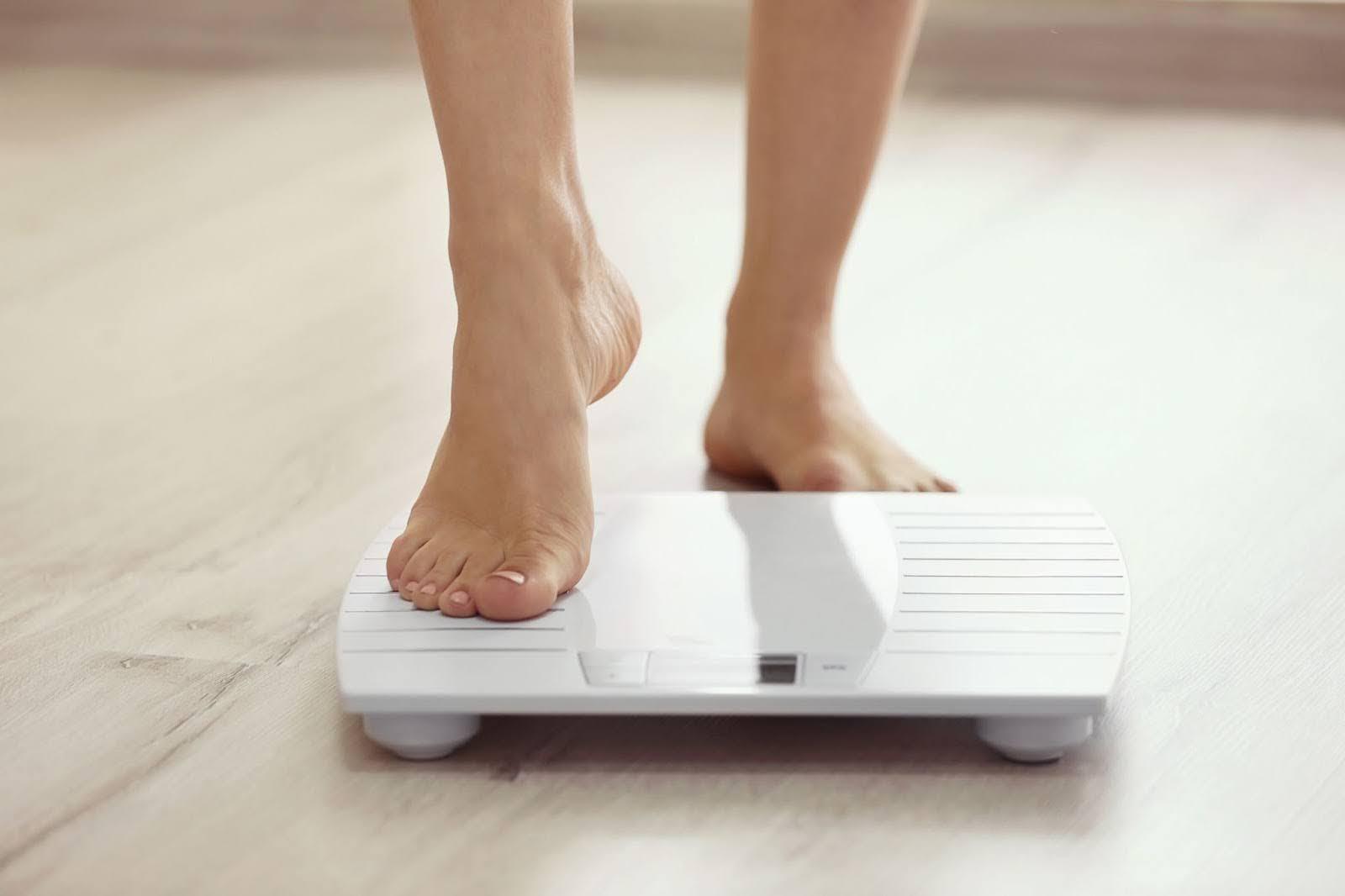
Factors influencing sweat rate include exercise intensity, environmental conditions, and individual physiology, so it’s a good idea to conduct sweat-rate tests under various conditions to fine-tune your hydration strategy.
Once you’ve determined your sweat rate, you can strive to match this rate during training and competition, ensuring you replace lost fluids to maintain stamina, prevent cramping or other heat-related issues, and avoid dehydration. Naturally, you’ll need to tailor it to account for sweat-rate variations due to race conditions, and based on personal experience. Monitor fluid loss in training to estimate needs, considering temperature, humidity, and intensity. Adjust intake for each race, using previous experiences to fine-tune.
Calculating your sweat rate: A case study
Let’s walk through an example of a cyclist using this procedure to determine her sweat rate. First, Emma weighs herself before an indoor ride on ROUVY and has a pre-workout weight of 60 kilograms (60,000 grams). She then gets on her trainer and rides for one hour, maintaining her typical training intensity, and noting the volume of water consumed during her ride, which was 500 millilitres. After the ride, she again hits the scale and finds her post-ride weight is 59.4 kilograms (59,400 grams). So, given her pre-ride weight of 60,000 grams and her post-ride weight of 59,400 grams, she sees that she lost 600 grams. She adds to that her total fluid Intake of 500 millilitres (since 1 millilitre = 1 gram, it converts to 500 grams). So Emma’s total sweat loss, or weight loss plus fluid intake is 1,100 grams (600 grams + 500 grams). To determine her sweat rate per hour, she divides her total sweat loss (1,100 grams) by the duration of her ride (one hour) to get 1,100 grams (or 1.1 litres)/hour.
Simply put, based on Emma's sweat-rate assessment, she loses approximately 1.1 litres of sweat per hour while riding in the given environmental conditions. This info helps her to plan her hydration strategy for future training sessions and races. She should aim to replace her sweat losses by drinking approximately 1.1 litres per hour during her rides, assuming the intensity and environmental conditions remain similar.



